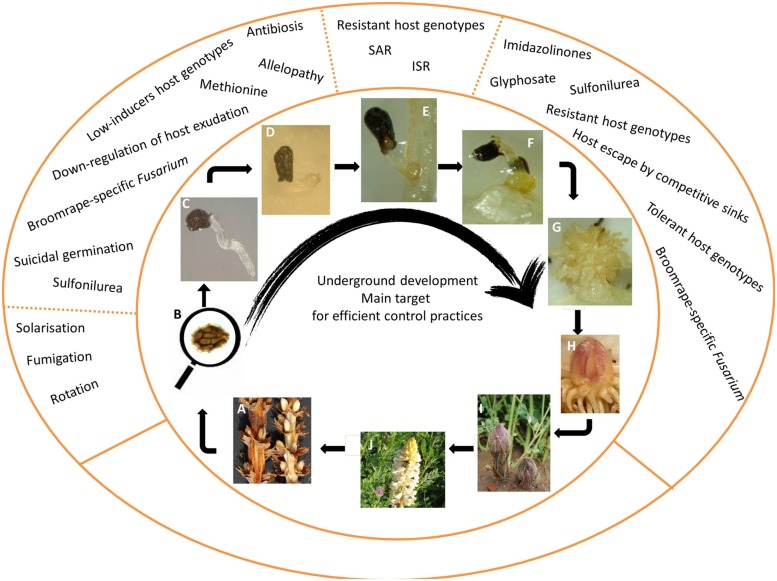FIGURE 2.
Ilustration of broomrape life stages and mechanisms of control. (A) Fructification and dehiscence of capsules containing mature seeds; (B) microscopic view of a seed (size ranging 0.2–2 mm) that undergoes sucessive dispersal, primary dormancy and annual release of secondary dormancy; (C) broomrape embryo does not develop morphologycaly identified cotyledons or shoot meristem and upon host-induced germination, only a radicle emerges from the seed with the function of searching and contacting the host root; (D) upon haustorial induction, the radicle stops elongating and a single terminal haustorium is differentiated. The first function of haustorium is as adhesion organ to host root surface mediated by a papillae cell layer; (E) adhesion to the root 3 days after germination induction; (F) upon vascular connection with the host, broomape initiates the development of the tubercle, the broomrape storage organ for host-derived nutrients. A swelling of the host root at the penetration point is also observed due the parasitic stimulation of host tissue proliferation; (G) tubercle develops a crown of adventicious roots; (H) tubercle differentiates apical shoot meristem (single shoot meristem for Orobanche species and several shoot meristems for Phelipanche species); (I) the underground shoot eventually emerges through the root surface; (J) flowering and pollination occur. Some broomrape species are outcrossers while others are self-pollinating. Reviewed in Joel et al. (2007).

